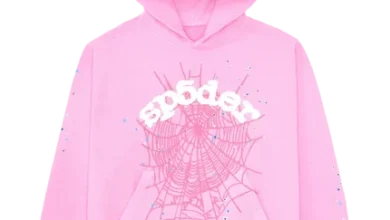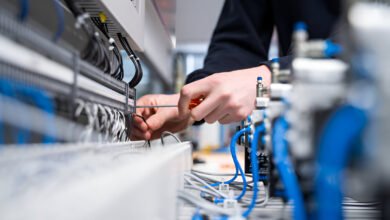
Understanding Healthcare 3D Animation Services
Healthcare 3D animation services involve the creation of three-dimensional digital animations that illustrate medical procedures, anatomical structures, and complex biological processes. These animations use cutting-edge technology to provide a detailed and realistic representation of medical phenomena, making them an invaluable resource for healthcare professionals, educators, and patients alike.
Benefits of Healthcare 3D Animation Services
- Enhanced Understanding of Complex Concepts
One of the primary advantages of healthcare 3D animation services is their ability to simplify and clarify complex medical concepts. Traditional methods such as textbooks and static images often fail to convey the full depth of anatomical structures or medical procedures. 3D animations, however, can provide a dynamic and interactive view, allowing viewers to see intricate details from multiple angles. This enhanced visualization helps both medical professionals and patients grasp complicated information more effectively.
- Improved Patient Education and Engagement
Healthcare 3D animation services are particularly beneficial for patient education. Patients often struggle to understand medical procedures or conditions described in medical jargon. By using 3D animations, healthcare providers can present information in a more engaging and comprehensible manner. Animations can depict surgical procedures, the progression of diseases, or the effects of medications, making it easier for patients to follow along and retain information. This leads to better-informed patients who are more likely to engage in their treatment plans.
- Effective Communication Between Healthcare Professionals
Clear communication among healthcare professionals is essential for successful patient outcomes. Healthcare 3D animation services facilitate this by providing a common visual reference for discussing complex cases. For instance, surgeons can use 3D animations to plan and rehearse intricate procedures, while radiologists can use them to explain findings to colleagues. This shared understanding helps ensure that all team members are on the same page, reducing the likelihood of errors and improving overall patient care.
- Increased Accuracy in Medical Training
Training and education are fundamental aspects of the medical field. Healthcare 3D animation services offer a realistic and interactive way to train medical students and professionals. Instead of relying solely on cadavers or static models, trainees can engage with 3D animations to explore anatomical structures and practice procedures. This hands-on approach enhances learning and retention, leading to more competent and skilled healthcare practitioners.
- Enhanced Marketing and Branding for Medical Practices
In addition to educational and clinical applications, healthcare 3D animation services can play a significant role in marketing and branding for medical practices. High-quality animations can be used to create compelling promotional materials, such as explainer videos and advertisements. These animations can showcase the unique features of a practice, highlight advanced technologies, or demonstrate the benefits of specific treatments. By leveraging 3D animations, medical practices can differentiate themselves from competitors and attract potential patients.
Applications of Healthcare 3D Animation Services
Healthcare 3D animation services have a wide range of applications across various sectors of the medical field. Here are some key areas where these services are making a significant impact:
- Surgical Planning and Simulation
Surgeons can use 3D animations to plan and simulate complex procedures. By visualizing the surgical site in three dimensions, they can assess the spatial relationships between anatomical structures and identify potential challenges. This advanced planning can improve precision during surgery and reduce the risk of complications.
- Patient Education and Consent
Before undergoing a procedure, patients need to fully understand what will happen. Healthcare 3D animation services provide a clear and detailed explanation of the procedure, helping patients make informed decisions. Animations can show step-by-step visuals of what to expect, which can alleviate anxiety and ensure that patients give informed consent.
- Medical Device and Pharmaceutical Marketing
Pharmaceutical companies and medical device manufacturers can use 3D animations to showcase their products in action. For instance, animations can demonstrate how a new medical device works or illustrate the mechanism of action of a medication. This visual approach helps potential clients and stakeholders better understand the product’s benefits and applications.
- Educational Materials for Medical Institutions
Medical schools and institutions can incorporate 3D animations into their educational materials. These animations can be used in textbooks, online courses, and interactive modules to enhance the learning experience. By providing a more immersive and interactive approach, educational institutions can improve student engagement and comprehension.
- Disease Awareness Campaigns
Public health organizations can utilize 3D animations to raise awareness about various diseases and health conditions. These animations can effectively convey information about disease prevention, symptoms, and treatment options. By making complex medical information more accessible, these campaigns can reach a wider audience and promote better public health outcomes.
Choosing the Right Healthcare 3D Animation Service Provider
Selecting the right healthcare 3D animation service provider is crucial for achieving high-quality and impactful results. Here are some factors to consider when choosing a provider:
- Experience and Expertise
Look for a provider with experience in creating 3D animations specifically for the healthcare industry. They should have a deep understanding of medical terminology, anatomical accuracy, and the ability to convey complex concepts effectively.
- Portfolio and Samples
Review the provider’s portfolio and request samples of their previous work. This will give you an idea of their animation style, quality, and attention to detail. Ensure that their work aligns with your specific needs and preferences.
- Customization and Collaboration
Choose a provider who offers customization and is willing to collaborate with you throughout the animation process. Your input is valuable in ensuring that the final product meets your expectations and accurately represents the intended message.
- Technology and Tools
Verify that the provider uses advanced technology and tools for creating 3D animations. High-quality animations require sophisticated software and equipment to achieve realistic and visually appealing results.
- Cost and Timeliness
Consider the cost of the services and the expected turnaround time. While quality is paramount, it’s essential to find a provider who offers competitive pricing and can deliver the animation within your desired timeframe.
The Future of Healthcare 3D Animation Services
The field of healthcare 3D animation services for Business is continually evolving with advancements in technology. Future developments may include the integration of augmented reality (AR) and virtual reality (VR) to create even more immersive and interactive experiences. These technologies could further enhance medical training, patient education, and procedural planning, making 3D animations an even more indispensable tool in the healthcare industry.
As technology continues to advance, healthcare 3D animation services will likely become more sophisticated and accessible. By staying at the forefront of these innovations, healthcare providers and organizations can continue to benefit from the numerous advantages that 3D animations offer.
Conclusion
In summary, healthcare 3D animation services are revolutionizing the medical industry by providing a dynamic and engaging way to visualize complex medical information. From enhancing patient education and improving communication among healthcare professionals to supporting medical training and marketing efforts, these services offer a wide range of benefits. By choosing the right service provider and embracing the latest technological advancements, healthcare organizations can leverage the power of 3D animations to achieve better outcomes and drive innovation in the field.



